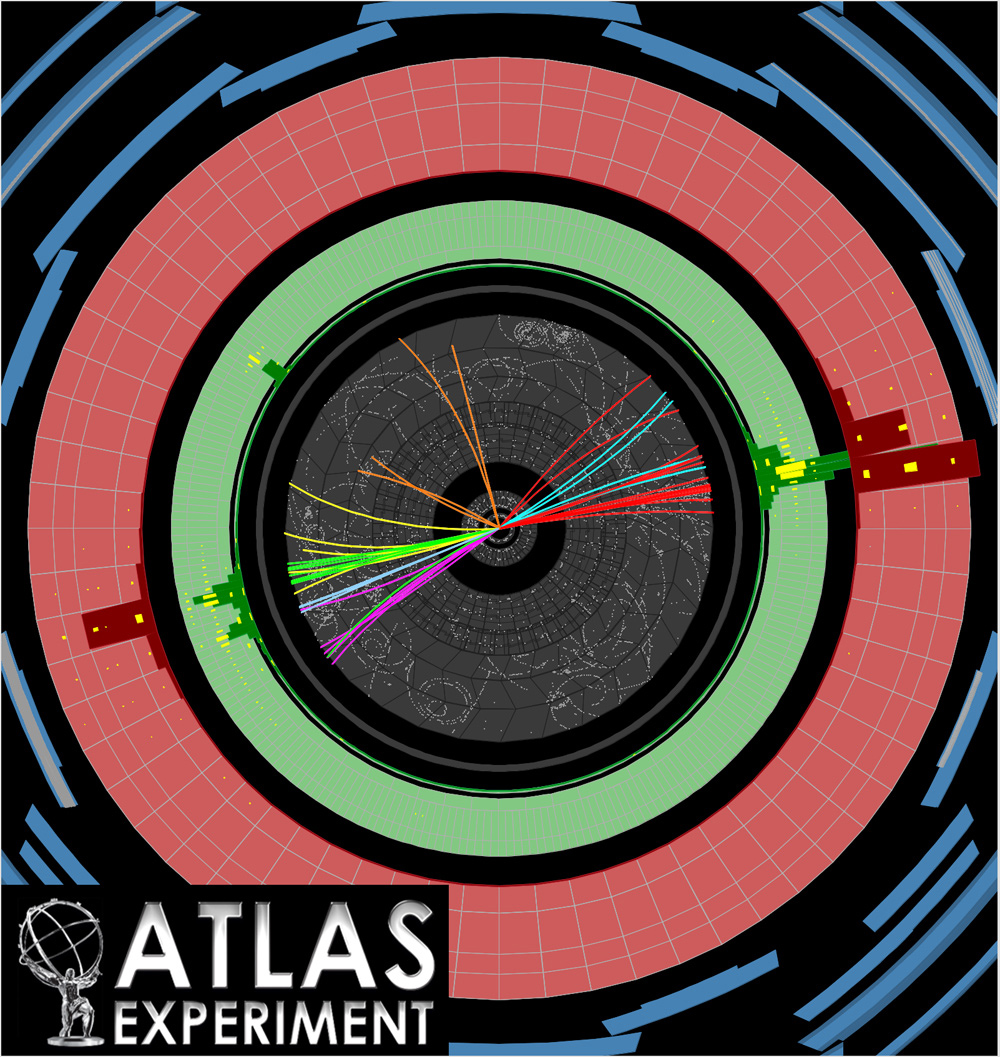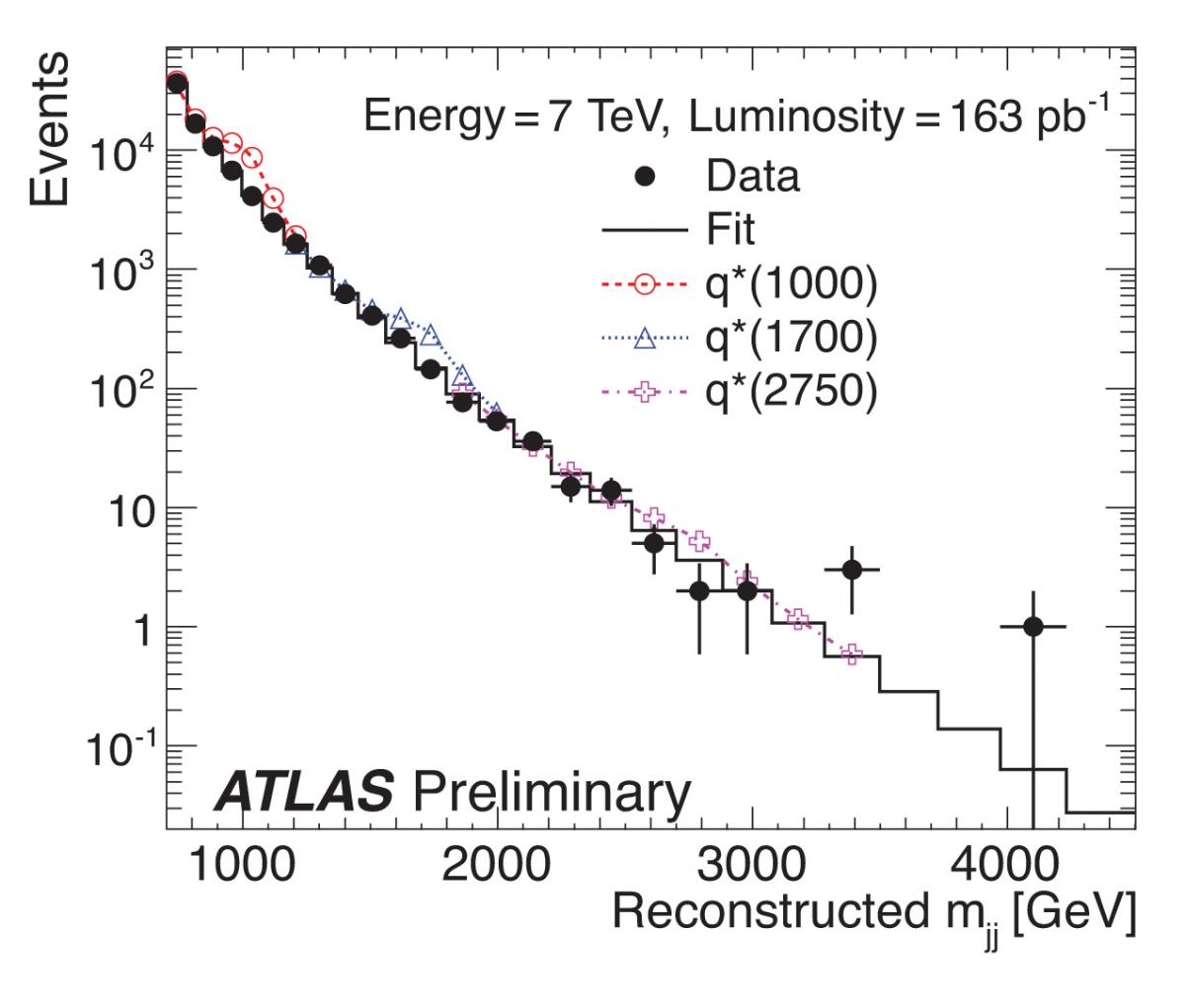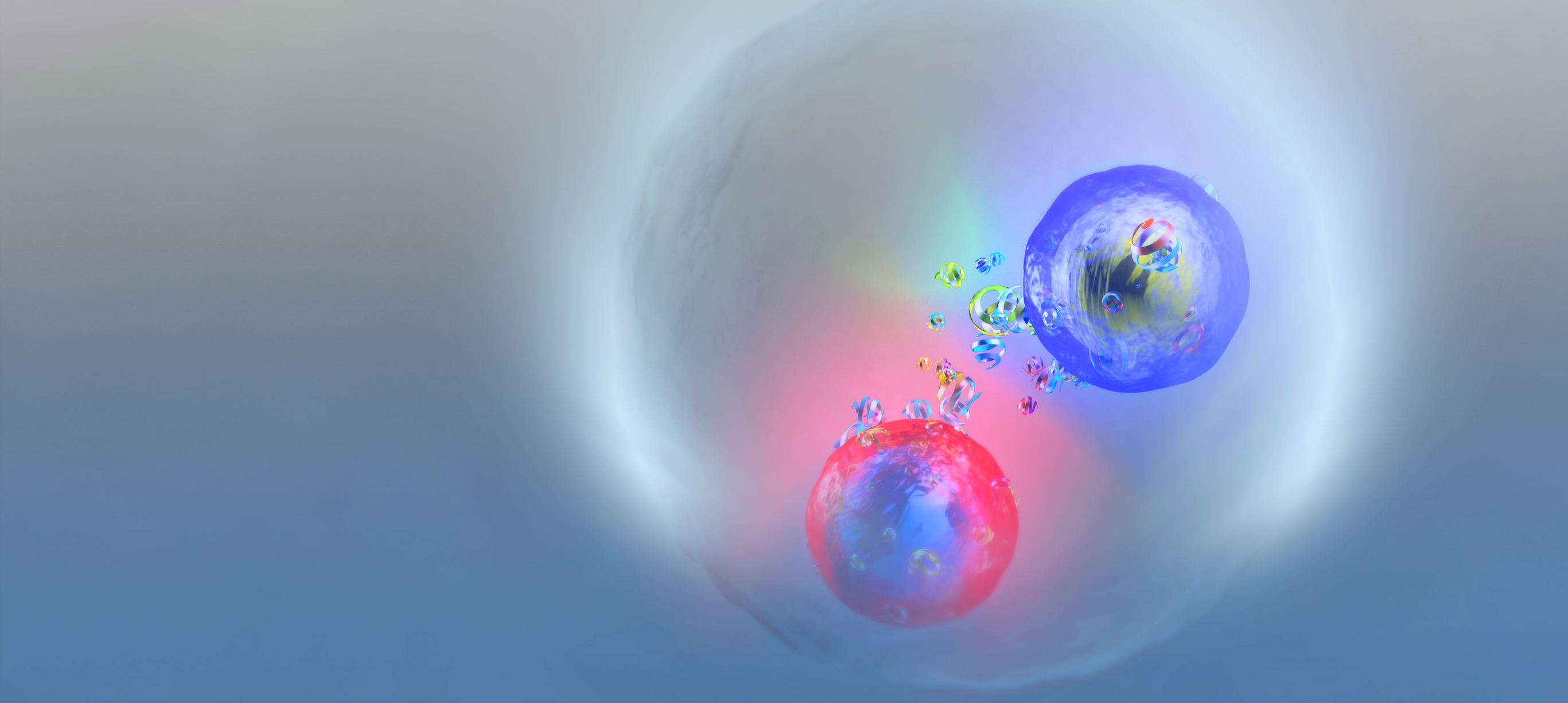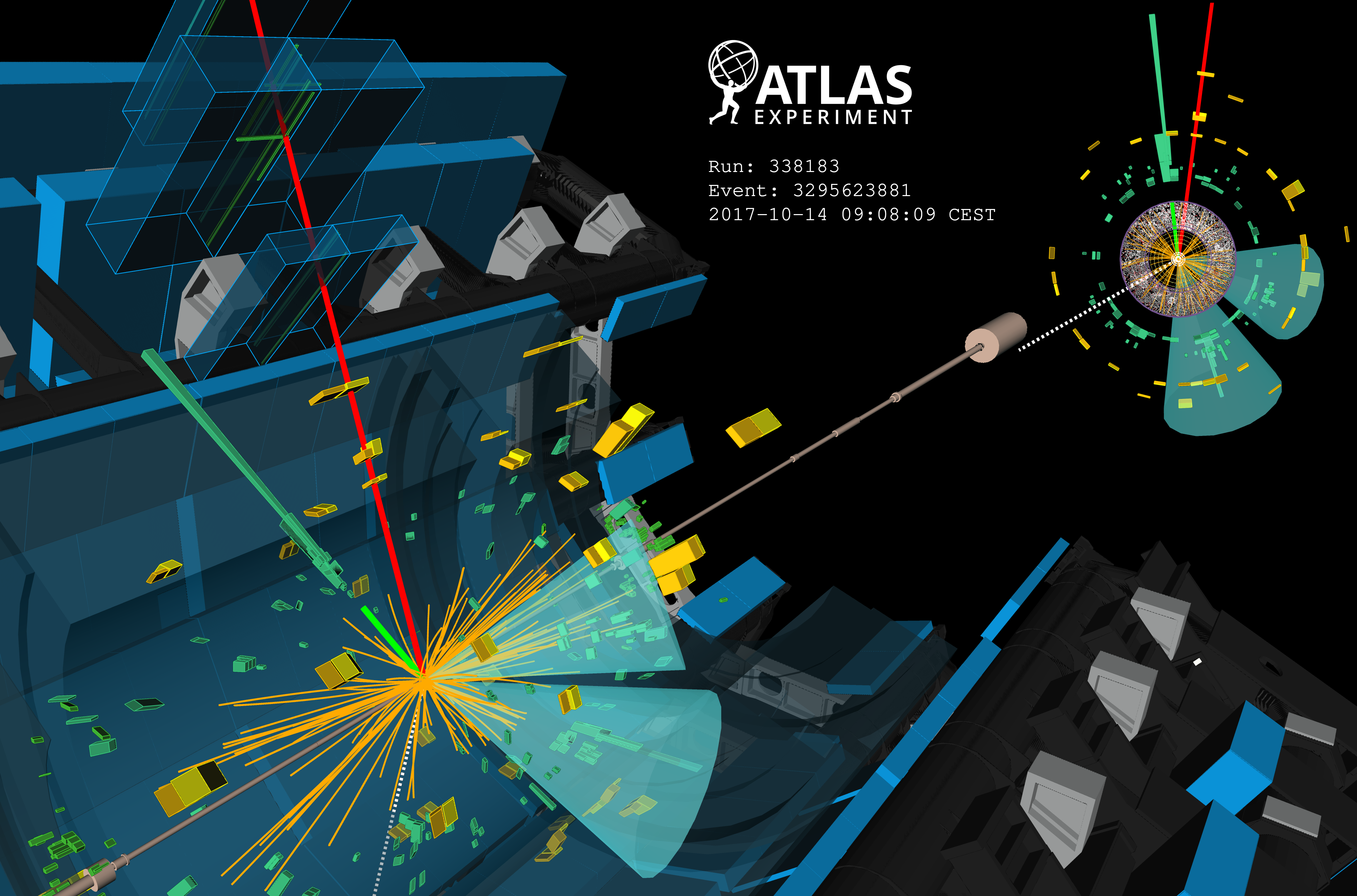A Search for New Physics Processes using Dijet Events
21 June 2011 | By

The ATLAS Experiment has extended the energy frontier of searches for new particles and new processes beyond those of the Standard Model by studying collision events with so-called "dijets".
As protons in the LHC collide, two collimated highly-energetic clusters of particles called 'jets' can be produced. The events with a pair of jets are called dijet events, see Fig. 1 and the video at the bottom.
At the unprecedented collision energy of 7 TeV, the LHC produces an enormous number of dijet events. This makes the dijet channel an ideal place to look for hints of new physics. Various theories that extend the Standard Model predict new particles that would decay to a pair of jets.
ATLAS has searched for possible deviations from the properties of dijet events that are characteristic of the Standard Model. Such deviations might be signals for excited quarks, microscopic short-lived black holes, "axigluons" or "technicolor-particles". Such studies might even tell us that the quarks are not fundamental particles, but are made of yet-more fundamental particles. In addition, these studies might provide us with the first signs of extra dimensions of space.
This type of search is somewhat different in concept to the searches for the Higgs boson and for supersymmetry. In those latter cases, the theory of interest is chosen, and a variety of different decay signatures are examined. Here the signature is fixed (dijets), and many theories can be investigated.

The ATLAS Experiment has taken data that significantly extend the mass regime explored and that allow us to look for signals of new physics. Even in the first full year of collisions at the Large Hadron Collider, these data take us into new territory, and Nature might surprise us.
If there were a new type of particle that decayed to two jets, it would show up in a plot of the distribution of a quantity known as "invariant mass". Invariant mass is the mass of the parent particle found by reconstructing it from the assorted particles into which it decayed (the particles in the two jets). The invariant mass is calculated from the energy and momentum of the decay products using the theory of Special Relativity, and it is equal to the mass of the particle that decayed.
Without any new particles, this invariant-mass distribution would decrease smoothly when plotted. But if there is something new decaying to two jets, then there will be an increased rate of events (a bump) in the distribution at the mass of this new parent particle. A second signature that might indicate the presence of a new interaction would be the presence of more events at large angles than expected in the Standard Model - just as happened when Rutherforddiscovered that there was a very small nucleus within the atom. This year, 2011, is the 100th anniversary of Rutherford's discovery.
Our analysis focuses on these two signatures: the reconstructed (invariant) mass of the two jets and the scattering angle of the collision. The results for invariant mass can be seen in Fig. 2.
No significant bumps appear in the distribution of Fig. 2, and the dijet angular distributions is also found to be in good agreement with Standard Model predictions. So no evidence for new physics has been seen. For example, for excited quarks, ATLAS can rule out masses below 2500 GeV. Consequently, any new physics, if it exists, must occur at even higher mass scales than this early running can test.
Novel analysis and statistical tools used to analyze the data collected in 2010 and early 2011 enabled ATLAS to exclude the existence of the models studied up to very high energies, significantly extending the limits set by previous measurements.
The LHC has accumulated a small fraction of the number of collisions that it will ultimately collect. During 2011-2012, the reach of these dijet searches will be greatly extended because of the rapidly increasing luminosity - stay tuned!



